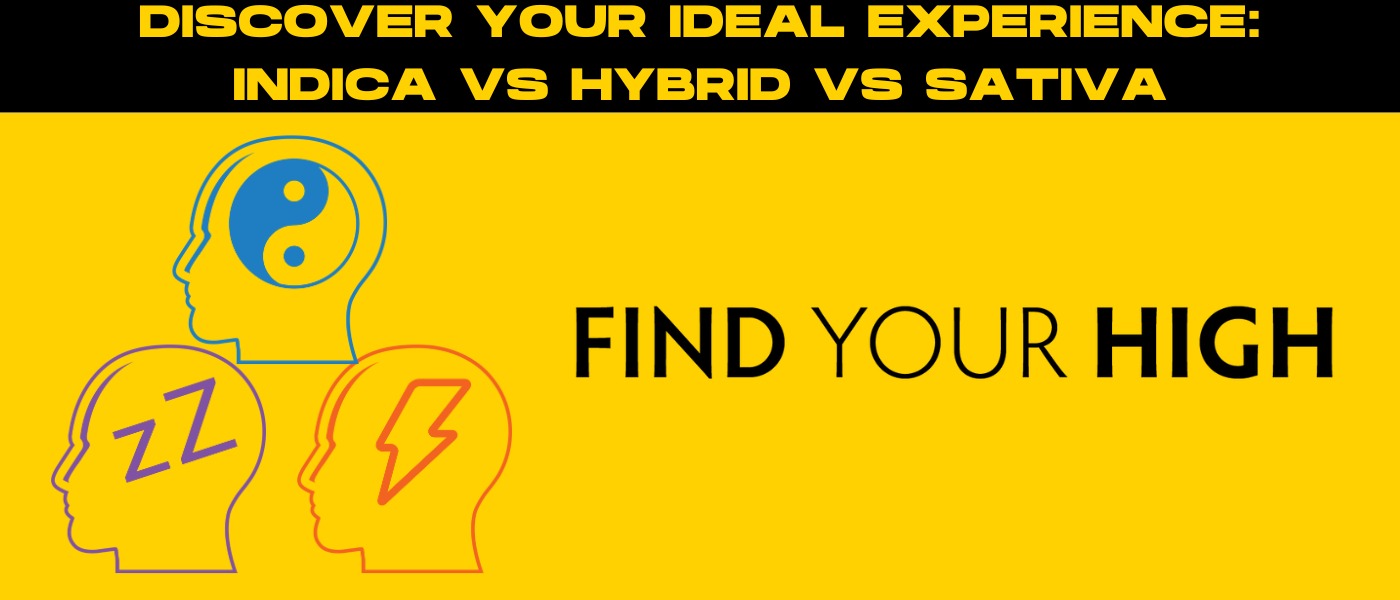Marijuana menus are full of choices. Indica vs. Sativa vs. Hybrid; sweet vs. savory; cannabis flower vs. cannabis edibles — the options are nearly endless.
To better create your ideal cannabis experience, it’s necessary to go back to the very basics. And the most basic classification of all—choosing between indica vs. sativa vs. hybrid— is the best place to start.
In this blog, we’re taking a deeper look into the nitty gritty details of indica, sativa, and hybrid strains. Whether you’re curious about the differences, interested in the similarities, or just craving general information about the classifications, keep reading to discover the right strain—or strains—for you.
Indica vs. Sativa vs. Hybrid: An Overview
One of the very first questions asked during a dispensary visit is whether you’re looking for an indica, sativa, or hybrid strain. If you’re unsure, your budtender typically dives into the basics behind the cannabis strain classifications.
Indica and sativa are the two primary classifications; however, they are not the only cannabis plant species to exist.
Cannabis Indica, Cannabis Sativa, and Cannabis Ruderalis make up the complete list of cannabis plants. Cannabis Ruderalis strains are typically high in CBD, low in THC, and complete an auto-flowering lifecycle.
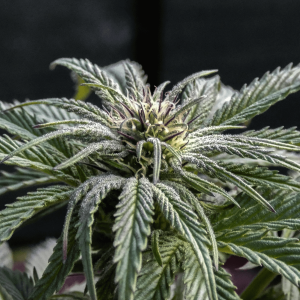
Nearly every product you find on a dispensary menu is classified as either an Indica, Sativa or a ‘hybrid’ between the two. But let’s take a deeper look into what these various classifications mean.
What Is Indica?
As mentioned, Cannabis Indica is among the three species of cannabis plants. This particular type of cannabis plant is consumed both medically and recreationally.
Though its origins are a bit hazy, most cannabis connoisseurs can agree that Indica strains are commonly differentiated by their extra sleepy high and typical terpene content.
Indica Effects
Best known for their intensely relaxing effects, many stoners spark up a pure indica strain before catching some z’s.
This particular species’ range of psychoactive effects has been found to treat a variety of conditions such as chronic pain, insomnia, nausea, and acute pain. Some stoners even praise indica strains for their ability to reduce anxiety.
An Indica strain typically produces an effective body high to promote relaxation, stimulate appetite, offer relief from sleepless nights, and dull any pain within the body.
What is Sativa?
Another cannabis plant classification, Cannabis Sativa is a species of marijuana also used both medically and recreationally within the cannabis community.
Sativa strains are believed to produce nearly opposite effects from Indica strains. For example, while Indica strains typically encourage sleep, Sativa cannabis strains are known for their energetic highs and cerebral effects. Speaking of which…
Sativa Effects
Most cannabis users reach for a sativa strain during the daytime hours. Whether for a quick wake n’ bake or an afternoon pick-me-up, a sativa weed strain tends to produce an uplifting high.
Commonly associated effects include a stimulating cerebral sensation, euphoria, and a boost of energy that could promote creativity, motivation, and productivity. However, some stoners prefer indica versus. sativa because negative effects include paranoia and anxiety.
Hybrids Explained
Hybrid cannabis strains are an intentional cross between both indica and sativa parent strains.
Cannabis growers typically choose specific strains as ‘parent plants’ to later cross. This creates new and unique strains based on their desired effects.
While some hybrid strains reveal a 50/50 balance between indica and sativa, others are either sativa-dominant or Indica-dominant, based on the parent plants.
Hybrid Effects
The limit does not exist on the number of hybrid strains that can be created. In fact, most strains in the cannabis industry are a hybrid between indica and sativa.
With that being said, the psychoactive effects of hybrid strains vary widely. For example, sativa-dominant strains may produce effects often described as cerebrally uplifting, but physically relaxing at the same time.
On the other hand, Indica-dominant hybrid cannabis strains may promote a sense of soothing relaxation, but without heavy sedation.
Both Indica-dominant and Sativa-dominant hybrid strains are popular among the cannabis community because they allow for a more tailored experience compared to purely indica or sativa strains.
The Origin of Indica and Sativa
The history of cannabis proves to be an entire history lesson, but the origins of indica, sativa, and hybrid strains are an important chapter within the overall story.
Sativa strains originated from either Central or Eastern Asia, depending on the source. Similar to Cannabis Indica, Sativa strains didn’t receive their official classification until 1753. At this time, a Swedish botanist named Carl Linnaeus identified and named the sativa plant species.
Indica strains originated either on the Asian subcontinent or in Afghanistan in the Hindu Kush Mountains. However, they weren’t classified specifically as ‘indica’ until 1785 when Jean-Baptiste Lamarck received samples from India and named the species accordingly.
Unfortunately, the origins of hybrid strains are much more difficult to track compared to indica and sativa strains. However, the birth of the beloved Skunk strain in 1969 by an unknown cultivator tends to mark the beginning of cannabis hybridization.
How To Tell the Difference Between Indica and Sativa Plants
The ongoing battle between indica vs. sativa vs. hybrid strains not only lies within the effects but within the actual plants as well.
Cannabis growers can easily differentiate between an Indica, Sativa, and hybrid plant just based on a few common characteristics.
And once you’ve finished reading this blog, you’ll be able to tell the difference between each plant, too!
Indica Plant Characteristics
Common characteristics shared among indica plants include:
- Shorter and bushier plants
- Shorter and wider leaves
- Short internodal distance
- Shorter stems
- Higher CBD content
- Shorter flowering period ranging from 8 to 10 weeks
Indica plants are almost always easier to grow and are typically recommended for novice home growers. This is in part due to the fact that they grow shorter and bushier compared to sativa plants, and in part because they have a shorter flowering time and can be harvested before pests interfere with the growing process.
Sativa Plant Characteristics
Common characteristics shared among sativa plants include:
- Taller and slimmer plants
- Longer, thinner, and pointier leaves
- Larger internodal spaces
- Longer stems
- Lower CBD content, slightly higher THC content
- Longer flowering period ranging from 10 to 12 weeks
Sativa flower is tricker to grow because it requires a lot of space, tons of light, and a higher temperature in order to thrive. However, sativa strains often require less frequent feeding and fertilizing, which could be an attractive quality to some new cultivators.
What Actually Determines the Effects of Indica vs. Sativa?
Whether indica, sativa, or hybrid, the determined effects of a cannabis strain lie solely in its cannabinoid and terpene content.
What Are Cannabinoids?
Cannabinoids are a group of chemical compounds found naturally in the trichomes of cannabis plants.
Just in case you need a refresher, trichomes are the tiny resinous glands found on the surface of the flowers and leaves. Trichomes are responsible for the sticky texture of cannabis as well as the ‘icy’ appearance of certain strains with more trichome density.

The cannabis plant produces more than 100 different cannabinoids, with the most well-known being delta-9-tetrahydrocannabinol (THC) and cannabidiol (CBD).
THC is primarily responsible for the psychoactive effects of cannabis, meaning it produces the “high” commonly associated with marijuana use. On the other hand, CBD does not produce any psychoactive effects and is being both studied and marketed for its potential therapeutic properties.
In addition to THC and CBD, other cannabinoids with potential therapeutic effects include cannabinol (CBN) and cannabigerol (CBG), among others. Cannabis researchers continue to study these other cannabinoids and their potential uses in various medical conditions and ailments such as insomnia and cancer.
Additionally, both CBD and CBG are becoming increasingly popular in the recreational realm of cannabis as everyday stoners consume cannabis with these compounds and discover the potential benefits.
Popular Terpenes Found in Cannabis
Terpenes are also naturally occurring chemical compounds found within the trichomes of cannabis plants.
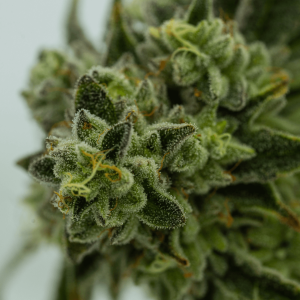
Cannabis terpenes were originally believed to only be aromatic compounds; however, more recent research reveals their influence on the effects of different strains. In other words, terpenes play a crucial role in the overall sensory experience of consuming cannabis and are believed to contribute to the therapeutic effects of the plant.
There are over 100 different terpenes identified in cannabis, and each strain can have a unique terpene profile. Popular terpenes found in cannabis, as well as essential oils, include:
- Myrcene: This terpene is known for its herbal, spicy, and musky aroma. It is also found in hops and is believed to contribute to the sedative and relaxing effects of certain cannabis strains. Indica strains tend to have a higher percentage of myrcene within their terpene profiles.
- Caryophyllene: Known for its spicy, peppery aroma, caryophyllene is also found in black pepper and cloves. Medical consumers often search for caryophyllene within a strain’s terpene profile to treat anxiety and reduce inflammation.
- Limonene: As the name suggests, limonene has a citrusy aroma similar to that of fresh lemons. It is found in various citrus fruits and is associated with the uplifting and mood-enhancing effects often attributed to Sativa strains.
- Pinene: Found in pine trees, pinene unsurprisingly has a refreshing, pine-like aroma. It is believed to have anti-inflammatory properties and may even help with daily focus and alertness.
- Linalool: This terpene has a floral scent and is commonly found in lavender. And what is lavender commonly associated with? If you answered ‘relaxation,’ you’d be correct! Linalool is often sought after for its relaxing effects that may even cause sedation.
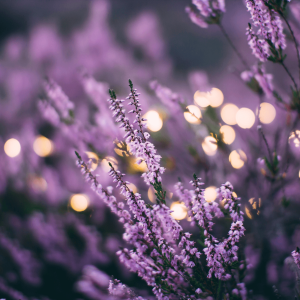
Terpenes and Cannabinoids: Understanding Strain Effects
So, how do both terpenes and cannabinoids influence the effects of a particular strain?
Well, cannabinoids interact with specific receptors in the endocannabinoid system. These interactions regulate various physiological processes, including mood, memory, pain sensation, appetite, and immune response.
Similarly, terpenes interact with other compounds in the plant, such as cannabinoids, and also interact with receptors and neurotransmitters in the endocannabinoid system. This is known as the entourage effect.
The entourage effect refers to the synergistic interaction of various compounds present in the cannabis plant. In other words, the entourage effect is the union of terpenes and THC working in concert to create the magic of cannabis.
Additionally, terpenes can interact with receptors and neurotransmitters to modulate brain activity — hence, anti-anxiety or sedative effects.
And finally, terpenes can influence the way cannabinoids are absorbed, metabolized, and distributed in the body. They can affect the blood-brain barrier, which directly impacts the onset, intensity, and duration of the effects experienced when consuming cannabis.
Indica, Sativa, and Hybrid vs. Cannabinoids and Terpenes
Indica, Sativa, and hybrids are not in direct competition with cannabinoids and terpenes in regard to the effects of a cannabis strain.
Rather, ‘indica,’ ‘sativa,’ and ‘hybrid’ or all classifications used to determine cannabis plant species. Whereas cannabinoids and terpenes are chemical compounds found within India, sativa, and hybrid plants, and are primarily responsible for the effects.
With that being said, the cannabis community ultimately attributes relaxed and sleepy effects to indica plants not because of the ‘indica’ classification, but because of the common terpenes and cannabinoid concentrations found within the species.
For example, Indica strains often contain higher concentrations of CBD but with a lower THC percentage. They may also have a higher percentage of terpenes such as myrcene, linalool, and caryophyllene.
Sativa strains, on the other hand, contain lower concentrations of CBD, but higher THC percentages. They also may contain greater amounts of limonene and pinene.
More Considerations When Choosing Between Indicas and Sativas
If you’re still struggling to find the right strain for you, we’re here to help.
Sure you could analyze the terpene profile, review the THC percentage, and smell each and every bud that’s on a dispensary menu. However, your choice ultimately lies within the desired effect, mood, and experience you wish to have with a strain.
Desired Effect
The “desired effect” of cannabis can vary greatly among individuals as it depends on personal preferences, medical history, goals, and intended use.
Here are some commonly desired effects associated with cannabis use:
1. Relaxation and Stress Relief
Many individuals consume cannabis to unwind, reduce stress, and promote a sense of deep relaxation. Such calming and tranquil effects are typically associated with a purely indica strain or even an Indica-dominant hybrid strain.
2. Euphoria and Mood Enhancement
Cannabis can produce feelings of euphoria and heightened mood, especially in purely sativa strains or Sativa-dominant hybrids. Some people enjoy the uplifting effects of different cannabis strains as they can enhance creativity, sociability, and overall well-being.
3. Pain Relief
Cannabis is often used as a natural remedy for pain management as both THC and CBD have demonstrated potential pain-relieving properties.
4. Increased Focus and Productivity
Some individuals may use specific strains or products to enhance focus, motivation, concentration, and productivity. These effects can be beneficial for tasks that require a level of mental clarity and attention often found in conjunction with consuming a terpene such as pinene.
5. Appetite Stimulation
Cannabis is known to stimulate appetite, which you’ll hear stoners often refer to as “the munchies.” A classic case of munchies may be specifically desired by individuals with reduced appetite due to medical conditions or treatments.
Desired Mood
Cannabis can affect mood in different ways, and individuals may seek certain emotional states when using cannabis. For example, commonly desired moods include:
- Calm and tranquil
- Euphoric and happy
- Creative and inspired
- Social and connected
- Serene and mindful
- Energized and focused
Desired Experience
The ‘desired experience’ encompasses both the effects and mood desired when consuming cannabis. One’s desired experience is completely subjective based on individual preferences, intentions, and goals.
Aside from the effects and moods mentioned above, here are some common elements that individuals may seek as part of their desired cannabis experience:
1. Recreational Enjoyment or Medical Necessity
Cannabis is always consumed either recreationally or for medical purposes. Many individuals of legal age use cannabis for recreational purposes, seeking an enjoyable and pleasurable experience. While others may consume cannabis out of complete necessity due to a medical condition.
2. Mind-Altering Effects
Some people specifically seek out the psychoactive effects of cannabis to alter their state of mind. They may desire an experience that allows them to explore different perspectives, enhance their senses, or engage in creative thinking. Some may even seek a ‘trippy’ experience, similar to that of consuming a psychedelic.
3. Enhanced Sensory Perception
Cannabis is known to heighten sensory experiences. This can make music, food, or other activities more pleasurable or engaging.
4. Social Connection
Cannabis can enhance social interactions and possibly even foster a sense of connection with others. Have you ever heard of a smoke circle? Gathering with friends and smoking a joint is a common way to connect with people.
5. Method of Consumption
Method of consumption is a huge element in regard to one’s overall experience with cannabis use. For example, some stoners may prefer to vape cannabis or consume edibles, while others may exclusively smoke flower or prefer the potency of cannabis concentrates.
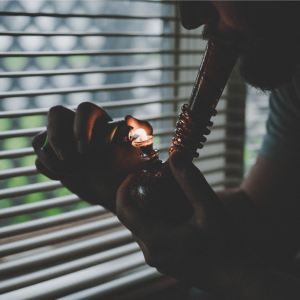
Cannabis Strains to Consider for Certain Conditions & Effects
According to cannabis experts, over 700 strains currently exist. This number is only expected to grow, especially as more states push to legalize the cultivation and sale of recreational marijuana.
Our dispensary menu is full of popular strains. However, in order to choose the right strain for you, it’s essential to ask yourself the following questions:
- Are you consuming cannabis to treat a certain condition?
- Is there a certain effect you’d like to achieve?
From there, you can find an indica, sativa, or hybrid strain tailored to your specific needs. For example, the most popular sativa strains used to treat depression and enhance mood include Durban Poison, Jack Herer, and Sour Diesel.
Popular indica strains used to treat insomnia and encourage relaxation include LA Pop Rocks, Purple Runtz, and RS11.
And finally, popular hybrid strains used to treat a variety of conditions and produce a range of balanced effects include OG Kush, Slurty, and Blue Dream.
Ultimately, the ongoing battle between indica vs. sativa vs. hybrid depends entirely on personal preference. And if you’re completely unsure where to begin, consider playing it safe with a hybrid.
FAQ
1. What’s better sativa, hybrid, or indica?
What’s considered to be ‘better’ between indica, sativa, and hybrid strains is based entirely on personal preference. Note that the desired experience can vary based on individual preferences, tolerance, sensitivity, and previous experiences with cannabis.
Finding the right strain, dosage, and consumption method that aligns with your desired experience and goals may require experimentation over time.
2. Is hybrid an upper or downer?
Hybrid marijuana strains are classified as one of two varieties: Sativa-dominant hybrid strains and Indica-dominant hybrid strains. Many consumers may find that sativa-dominant strains offer a boost of energy or motivation, whereas Indica-dominant strains may encourage relaxation.
3. Is sativa an upper or downer?
Sativa cannabis strains are often associated with cerebral sensations and boosts of energy, creativity, motivation, productivity, etc. With that being said, Sativa strains are often considered an ‘upper.’
4. Is indica hybrid or sativa better for anxiety?
Indica strains are typically recommended for anxiety thanks to the lower THC percentage, higher CBD content, and presence of specific terpenes like caryophyllene. However, the same strain could offer a completely different experience between two stoners, so it’s important to find the specific strain that’s right for you.

 Rewards
Rewards



